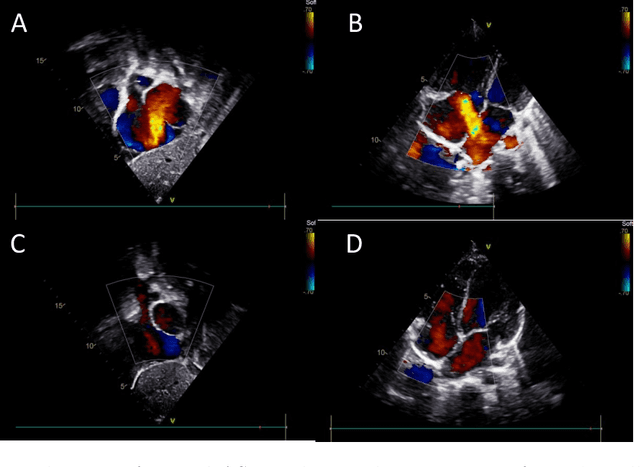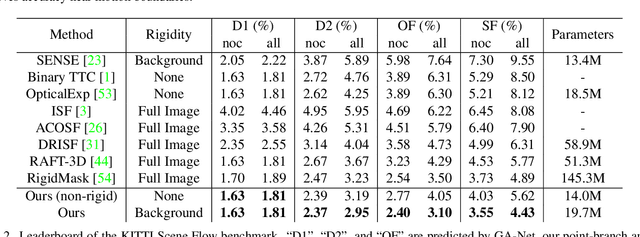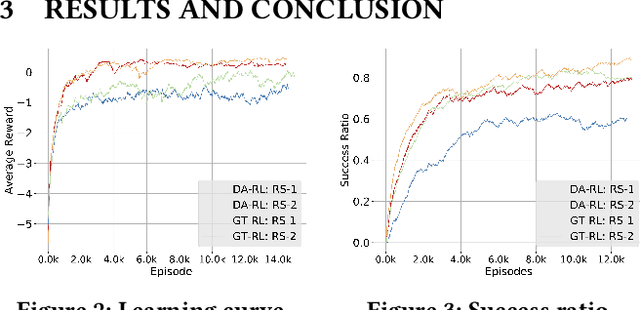Lijun Chen
Incentivized Lipschitz Bandits
Aug 26, 2025Abstract:We study incentivized exploration in multi-armed bandit (MAB) settings with infinitely many arms modeled as elements in continuous metric spaces. Unlike classical bandit models, we consider scenarios where the decision-maker (principal) incentivizes myopic agents to explore beyond their greedy choices through compensation, but with the complication of reward drift--biased feedback arising due to the incentives. We propose novel incentivized exploration algorithms that discretize the infinite arm space uniformly and demonstrate that these algorithms simultaneously achieve sublinear cumulative regret and sublinear total compensation. Specifically, we derive regret and compensation bounds of $\Tilde{O}(T^{d+1/d+2})$, with $d$ representing the covering dimension of the metric space. Furthermore, we generalize our results to contextual bandits, achieving comparable performance guarantees. We validate our theoretical findings through numerical simulations.
GaRe: Relightable 3D Gaussian Splatting for Outdoor Scenes from Unconstrained Photo Collections
Jul 28, 2025Abstract:We propose a 3D Gaussian splatting-based framework for outdoor relighting that leverages intrinsic image decomposition to precisely integrate sunlight, sky radiance, and indirect lighting from unconstrained photo collections. Unlike prior methods that compress the per-image global illumination into a single latent vector, our approach enables simultaneously diverse shading manipulation and the generation of dynamic shadow effects. This is achieved through three key innovations: (1) a residual-based sun visibility extraction method to accurately separate direct sunlight effects, (2) a region-based supervision framework with a structural consistency loss for physically interpretable and coherent illumination decomposition, and (3) a ray-tracing-based technique for realistic shadow simulation. Extensive experiments demonstrate that our framework synthesizes novel views with competitive fidelity against state-of-the-art relighting solutions and produces more natural and multifaceted illumination and shadow effects.
Incentivized Exploration of Non-Stationary Stochastic Bandits
Mar 16, 2024



Abstract:We study incentivized exploration for the multi-armed bandit (MAB) problem with non-stationary reward distributions, where players receive compensation for exploring arms other than the greedy choice and may provide biased feedback on the reward. We consider two different non-stationary environments: abruptly-changing and continuously-changing, and propose respective incentivized exploration algorithms. We show that the proposed algorithms achieve sublinear regret and compensation over time, thus effectively incentivizing exploration despite the nonstationarity and the biased or drifted feedback.
NeuV-SLAM: Fast Neural Multiresolution Voxel Optimization for RGBD Dense SLAM
Feb 03, 2024Abstract:We introduce NeuV-SLAM, a novel dense simultaneous localization and mapping pipeline based on neural multiresolution voxels, characterized by ultra-fast convergence and incremental expansion capabilities. This pipeline utilizes RGBD images as input to construct multiresolution neural voxels, achieving rapid convergence while maintaining robust incremental scene reconstruction and camera tracking. Central to our methodology is to propose a novel implicit representation, termed VDF that combines the implementation of neural signed distance field (SDF) voxels with an SDF activation strategy. This approach entails the direct optimization of color features and SDF values anchored within the voxels, substantially enhancing the rate of scene convergence. To ensure the acquisition of clear edge delineation, SDF activation is designed, which maintains exemplary scene representation fidelity even under constraints of voxel resolution. Furthermore, in pursuit of advancing rapid incremental expansion with low computational overhead, we developed hashMV, a novel hash-based multiresolution voxel management structure. This architecture is complemented by a strategically designed voxel generation technique that synergizes with a two-dimensional scene prior. Our empirical evaluations, conducted on the Replica and ScanNet Datasets, substantiate NeuV-SLAM's exceptional efficacy in terms of convergence speed, tracking accuracy, scene reconstruction, and rendering quality.
Unsupervised Deep Cross-Language Entity Alignment
Sep 19, 2023Abstract:Cross-lingual entity alignment is the task of finding the same semantic entities from different language knowledge graphs. In this paper, we propose a simple and novel unsupervised method for cross-language entity alignment. We utilize the deep learning multi-language encoder combined with a machine translator to encode knowledge graph text, which reduces the reliance on label data. Unlike traditional methods that only emphasize global or local alignment, our method simultaneously considers both alignment strategies. We first view the alignment task as a bipartite matching problem and then adopt the re-exchanging idea to accomplish alignment. Compared with the traditional bipartite matching algorithm that only gives one optimal solution, our algorithm generates ranked matching results which enabled many potentials downstream tasks. Additionally, our method can adapt two different types of optimization (minimal and maximal) in the bipartite matching process, which provides more flexibility. Our evaluation shows, we each scored 0.966, 0.990, and 0.996 Hits@1 rates on the DBP15K dataset in Chinese, Japanese, and French to English alignment tasks. We outperformed the state-of-the-art method in unsupervised and semi-supervised categories. Compared with the state-of-the-art supervised method, our method outperforms 2.6% and 0.4% in Ja-En and Fr-En alignment tasks while marginally lower by 0.2% in the Zh-En alignment task.
Atrial Septal Defect Detection in Children Based on Ultrasound Video Using Multiple Instances Learning
Jun 06, 2023



Abstract:Purpose: Congenital heart defect (CHD) is the most common birth defect. Thoracic echocardiography (TTE) can provide sufficient cardiac structure information, evaluate hemodynamics and cardiac function, and is an effective method for atrial septal defect (ASD) examination. This paper aims to study a deep learning method based on cardiac ultrasound video to assist in ASD diagnosis. Materials and methods: We select two standard views of the atrial septum (subAS) and low parasternal four-compartment view (LPS4C) as the two views to identify ASD. We enlist data from 300 children patients as part of a double-blind experiment for five-fold cross-validation to verify the performance of our model. In addition, data from 30 children patients (15 positives and 15 negatives) are collected for clinician testing and compared to our model test results (these 30 samples do not participate in model training). We propose an echocardiography video-based atrial septal defect diagnosis system. In our model, we present a block random selection, maximal agreement decision and frame sampling strategy for training and testing respectively, resNet18 and r3D networks are used to extract the frame features and aggregate them to build a rich video-level representation. Results: We validate our model using our private dataset by five-cross validation. For ASD detection, we achieve 89.33 AUC, 84.95 accuracy, 85.70 sensitivity, 81.51 specificity and 81.99 F1 score. Conclusion: The proposed model is multiple instances learning-based deep learning model for video atrial septal defect detection which effectively improves ASD detection accuracy when compared to the performances of previous networks and clinical doctors.
CamLiFlow: Bidirectional Camera-LiDAR Fusion for Joint Optical Flow and Scene Flow Estimation
Nov 20, 2021



Abstract:In this paper, we study the problem of jointly estimating the optical flow and scene flow from synchronized 2D and 3D data. Previous methods either employ a complex pipeline which splits the joint task into independent stages, or fuse 2D and 3D information in an ``early-fusion'' or ``late-fusion'' manner. Such one-size-fits-all approaches suffer from a dilemma of failing to fully utilize the characteristic of each modality or to maximize the inter-modality complementarity. To address the problem, we propose a novel end-to-end framework, called CamLiFlow. It consists of 2D and 3D branches with multiple bidirectional connections between them in specific layers. Different from previous work, we apply a point-based 3D branch to better extract the geometric features and design a symmetric learnable operator to fuse dense image features and sparse point features. We also propose a transformation for point clouds to solve the non-linear issue of 3D-2D projection. Experiments show that CamLiFlow achieves better performance with fewer parameters. Our method ranks 1st on the KITTI Scene Flow benchmark, outperforming the previous art with 1/7 parameters. Code will be made available.
Cooperative Control of Mobile Robots with Stackelberg Learning
Aug 03, 2020



Abstract:Multi-robot cooperation requires agents to make decisions that are consistent with the shared goal without disregarding action-specific preferences that might arise from asymmetry in capabilities and individual objectives. To accomplish this goal, we propose a method named SLiCC: Stackelberg Learning in Cooperative Control. SLiCC models the problem as a partially observable stochastic game composed of Stackelberg bimatrix games, and uses deep reinforcement learning to obtain the payoff matrices associated with these games. Appropriate cooperative actions are then selected with the derived Stackelberg equilibria. Using a bi-robot cooperative object transportation problem, we validate the performance of SLiCC against centralized multi-agent Q-learning and demonstrate that SLiCC achieves better combined utility.
* 8 pages, 7 figures
A Smoothed Analysis of Online Lasso for the Sparse Linear Contextual Bandit Problem
Jul 16, 2020

Abstract:We investigate the sparse linear contextual bandit problem where the parameter $\theta$ is sparse. To relieve the sampling inefficiency, we utilize the "perturbed adversary" where the context is generated adversarilly but with small random non-adaptive perturbations. We prove that the simple online Lasso supports sparse linear contextual bandit with regret bound $\mathcal{O}(\sqrt{kT\log d})$ even when $d \gg T$ where $k$ and $d$ are the number of effective and ambient dimension, respectively. Compared to the recent work from Sivakumar et al. (2020), our analysis does not rely on the precondition processing, adaptive perturbation (the adaptive perturbation violates the i.i.d perturbation setting) or truncation on the error set. Moreover, the special structures in our results explicitly characterize how the perturbation affects exploration length, guide the design of perturbation together with the fundamental performance limit of perturbation method. Numerical experiments are provided to complement the theoretical analysis.
Distributed Reinforcement Learning for Cooperative Multi-Robot Object Manipulation
Mar 21, 2020

Abstract:We consider solving a cooperative multi-robot object manipulation task using reinforcement learning (RL). We propose two distributed multi-agent RL approaches: distributed approximate RL (DA-RL), where each agent applies Q-learning with individual reward functions; and game-theoretic RL (GT-RL), where the agents update their Q-values based on the Nash equilibrium of a bimatrix Q-value game. We validate the proposed approaches in the setting of cooperative object manipulation with two simulated robot arms. Although we focus on a small system of two agents in this paper, both DA-RL and GT-RL apply to general multi-agent systems, and are expected to scale well to large systems.
* 3 pages, 3 figures
 Add to Chrome
Add to Chrome Add to Firefox
Add to Firefox Add to Edge
Add to Edge